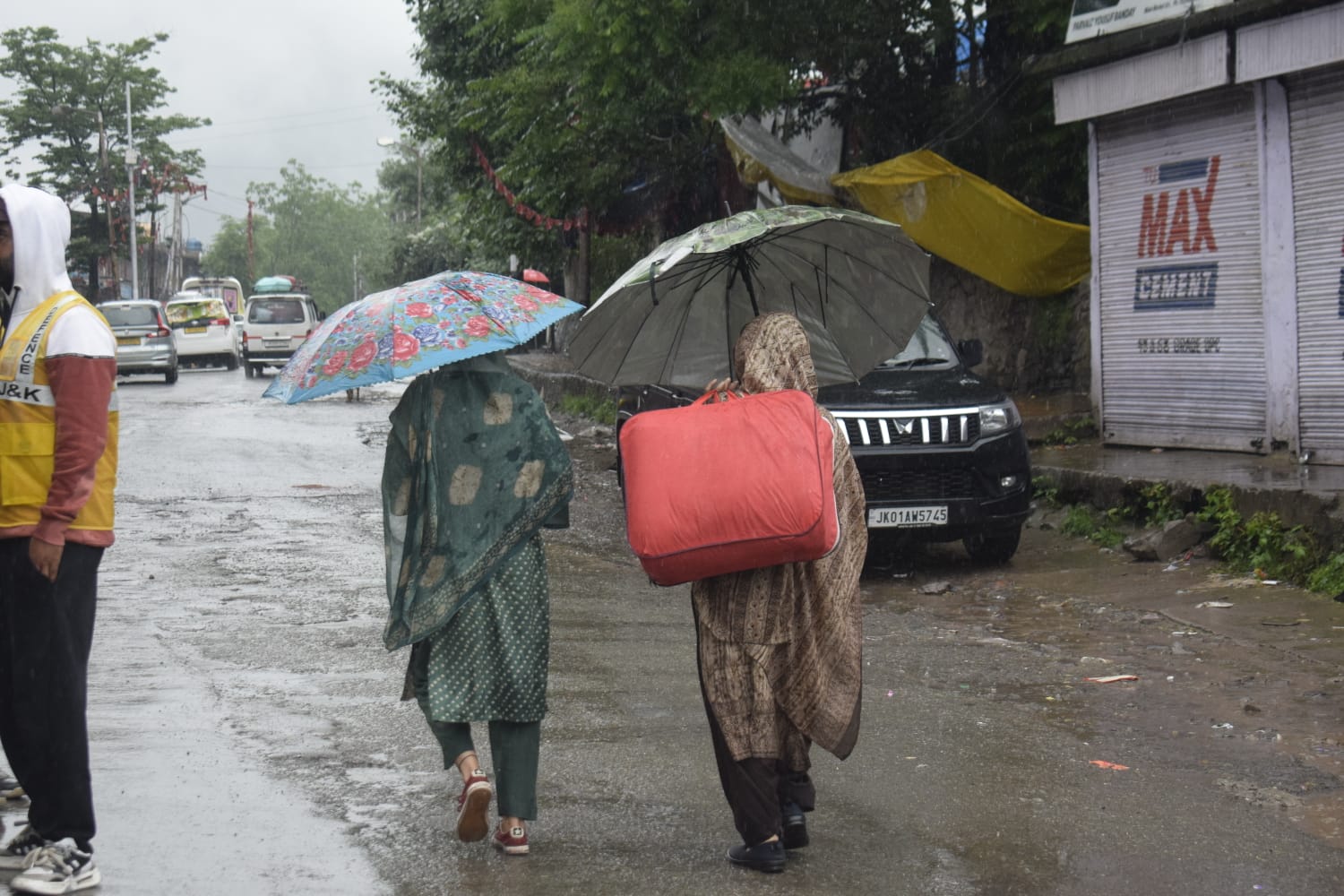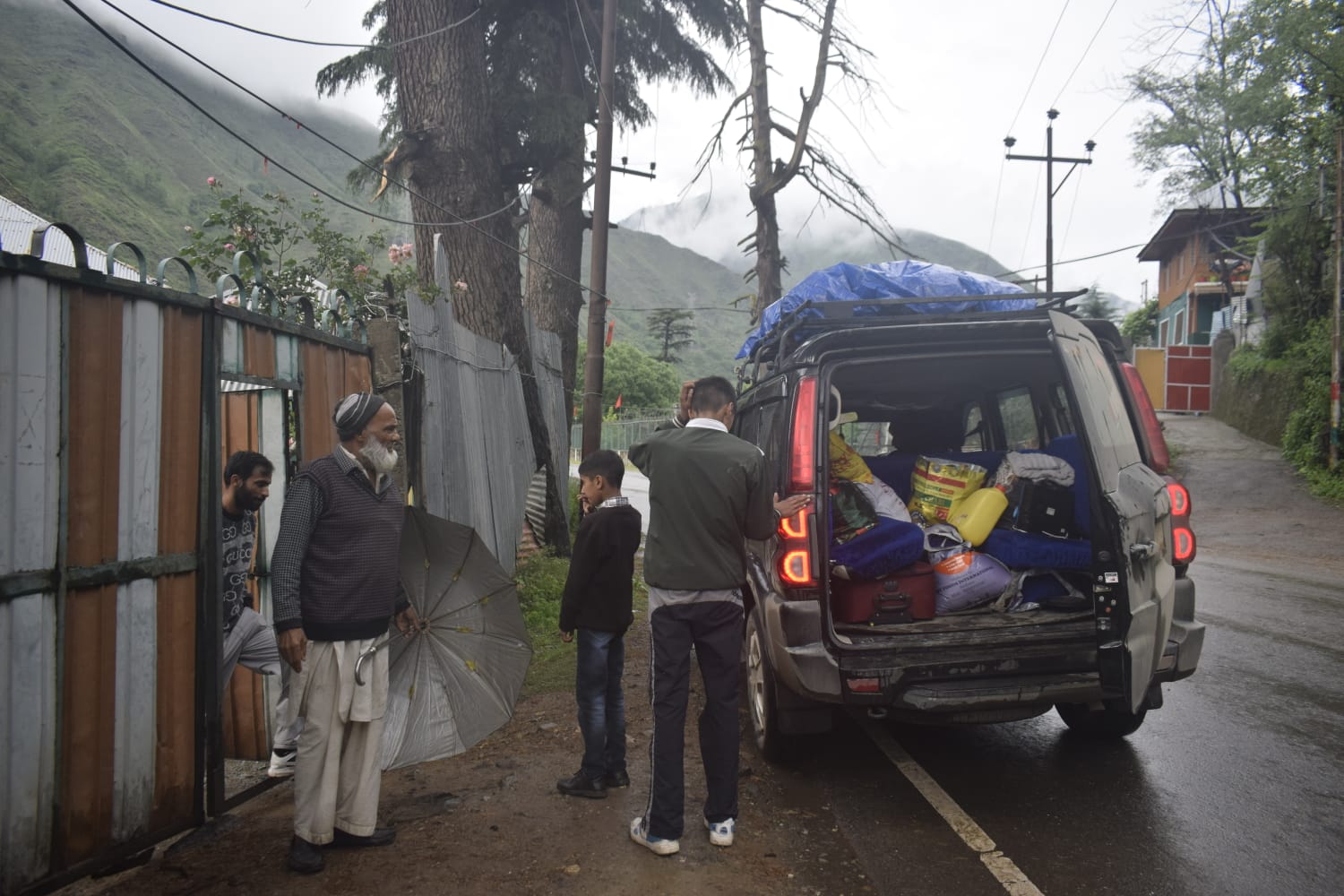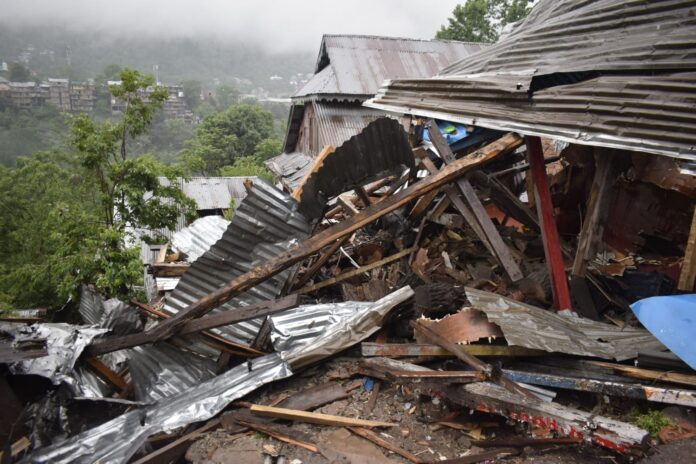Tauseef Ahmad and Sajid Raina/ TwoCircles.net
Uri (Baramulla): “War should never be rejoiced. When the shells hit, they don’t ask your identity,” said Farooq Ahmad, a resident of Kamalkote village, speaking to Twocircles.net as he recounted the chaos that swept Uri in the early hours of May 10, following a sleepless night of intense cross-border shelling.
“All night we were praying that this bombardment would stop and the first ray of light would leave. We only took some important documents and a few clothes and left our house.”
In heavy rain, hundreds of families, like Jameela and her daughter, Ayesha, fled their homes in Uri after two consecutive days of shelling by Pakistan, each carrying only a single bag and sought refuge in urban areas of North Kashmir’s Baramulla district.
Heavy shelling was reported in various parts of the country, including Punjab, Jaisalmer and border regions of Jammu and Kashmir, following ‘Operation Sindoor’, which targeted nine terrorist camps in Pakistan and Pakistan-occupied Kashmir (PoK). The operation came in response to the brutal Pahalgam massacre that claimed the lives of 26 tourists.
Following India’s precision strikes at nine locations as part of the ‘Operation Sindoor’ to serve justice to the civilians who lost their lives in Baisaran meadow, Pakistan retaliated with drones and artillery strikes, bombarding regions from Jammu and Baramulla to Punjab and Rajasthan’s Jaisalmer over three relentless nights.

According to official figures, around 13 civilians, including Additional Deputy Commissioner Rajouri, were killed and approximately 59 individuals suffered injuries in the cross-border shelling in Rajouri district alone.
Authorities shut down educational institutions across the valley and begun evacuating border residents from homes situated along the Line of Control (LoC).
The Wedding Dream
“We were all inside when the shell hit. In one moment, it was all over – my dress, the food, the decorations… everything is under the rubble,” Bisma said softly, standing outside what remained of her home.
She was set to be married on May 10. Now, instead of celebrating her wedding, she watches people dig through debris, trying to salvage remnants of a life interrupted.
Her father, Nazir Ahmad Mir, had spent years doing daily labor – cutting wood, carrying sand and taking up any work he could find – to save for her marriage. “I had nothing fancy, just enough to give her a decent start. I cannot believe all of it is gone. One shell ended it all,” he said, staring blankly at the broken roof and scattered bricks.
Local residents reported that several houses were damaged in the shelling from across the border late on May 8 evening, but the Mir family’s home bore the brunt of it.
“Everyone in the village knew about Bisma’s wedding. We were all going to be part of it. But instead of celebration, there’s silence today,” said Abdul Majeed, a neighbor.
As dawn broke, neighbours came to help. Women picked up broken utensils and salvaged clothing and a few men helped clear parts of the collapsed wall.
“Bisma had dreamed of this day since she was a child. Now she is sitting on a charpoy outside a broken house, crying. It is not fair,” said Shakeela, a relative.
The sole breadwinner of the family, Nazir is uncertain how to start again. “We are poor. But we had dreams. What else does a man have?”
An Exodus Under Fire
“I had nothing but this bag on my head,” recounted Jameela, clutching the plastic handle of a small bundle containing two sets of clothes, one for her and another for Ayesha, as they waded through ankle-deep puddles toward the nearest relief camp.
They left home early Friday morning, their locality in Uri echoing with shell bursts that flattened walls around them.
Unlike many who boarded government-arranged buses, Jameela, having missed her ride and unable to afford private transport, walked several kilometers with her daughter to reach the main town of Uri.

According to official data, one woman was killed and 18 others injured during the two days of cross-border shelling in North Kashmir’s Uri region alone.
“Everyone was running – some with children, while others with only what they could grip. I have seen shelling before, but this felt like pure war,” said Ghulam Nabi, a 70-year-old villager whose home narrowly escaped destruction.
The Wider Conflict
On April 22, gunmen from The Resistance Front opened fire on a group of tourists in the meadows near Pahalgam, killing 26 men, including one Nepali national. It was a chilling sectarian execution that shocked the nation. The massacre triggered ‘Operation Sindoor’, which destroyed nine terror camps across Pakistan and Pakistan-administered Kashmir linked to the Jaish-e-Mohammed and the Lashkar-e-Toiba.
Pakistan’s government condemned the operation as a “cowardly act of war” and vowed retaliation, while India defended its strikes as a necessary measure to dismantle networks responsible for cross-border terrorism. According to Reuters, the operation, launched in the wee hours of May 7, eliminated key militant commanders and severely disrupted extremist logistics in Bahawalpur and Muridke.
Nightly Drone Waves
For three consecutive nights following the strikes, Pakistan-launched drones violated Indian airspace and targeted both military and civilian sites from Jammu and Baramulla to Punjab’s Pathankot and Rajasthan’s Jaisalmer. In Jaisalmer alone, local authorities intercepted nine unmanned aerial vehicles before they could cause further damage.
Meanwhile, Indian air defenses downed dozens of drones, preventing greater devastation. Still, crops were flattened, livestock spooked to death and entire villages forced underground as the nightly hum of drones and thunderous replies from anti-aircraft guns became the new normal till a ceasefire, brokered by the United States, was announced on May 9.
Human Cost
Amid this strategic tit-for-tat, civilians suffered a huge loss. Relief camps in Uri and neighboring regions overflowed with families like Jameela’s. Their basic needs managed by local NGOs working under tight security conditions.
Schools in frontline villages remain shuttered, depriving children of education and a sense of normalcy, while psychological trauma mounted without adequate mental health support.
Authorities across the Kashmir valley issued advisories and helpline numbers for border residents, urging them to remain in safe areas.
“We are not asking for much. These are innocent villagers. This should never happen to them,” said Sarpanch Ghulam Nabi.


